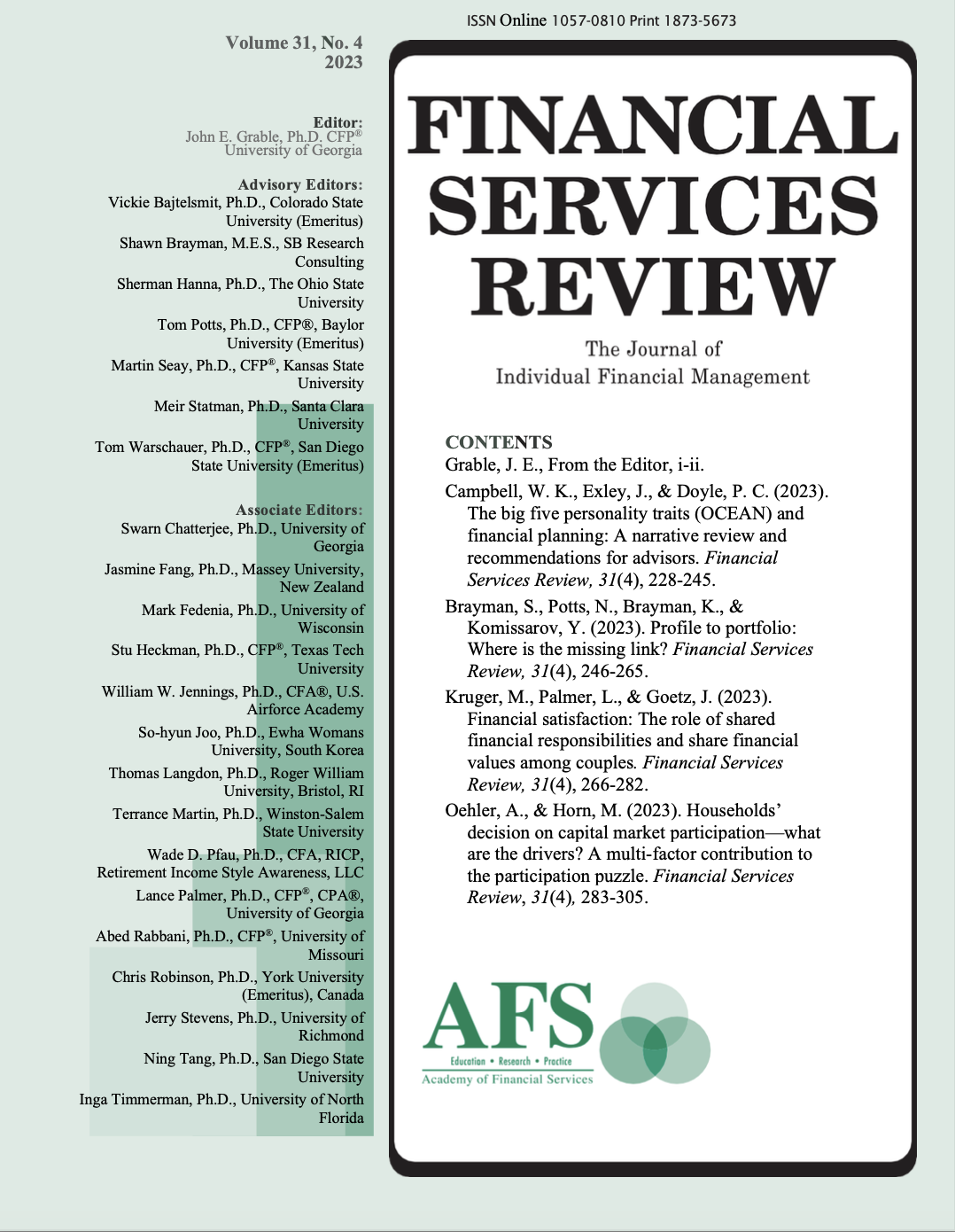Households’ Decision on Capital Market Participation: What Are the Drivers? A Multi-Factor Contribution to the Participation Puzzle
DOI:
https://doi.org/10.61190/fsr.v31i4.3174Keywords:
capital market participation, risk attitude, risky assets, household finance, structural equation analysis, financial literacy, financial decision making, human capital investment, life-cycleAbstract
Stock market investments are in the spotlight of the household finance literature, although real-world households make other financial decisions of higher relevance. We widen the scope and include decisions related to, e.g., voluntary pension plans, whole life insurance contracts, and housing and investments in other risky assets than stocks, e.g., bonds or mutual funds. Further, we provide a methodology that goes beyond regression analysis by employing a structural equation analysis (SEA) and apply it on data from a broad and representative survey of the German Central Bank. Our SEA allows us to investigate and quantitatively estimate complex relationships and to test several hypotheses simultaneously. Our structural equation model captures about 60% of the variation in the capital market participation decision. The results show that although households' financial literacy and risk aversion are most strongly related to investments in risky assets, further factors such as wealth, voluntary pension plans and whole life insurance contracts, financial advice, and investment experience should also be considered. Financial literacy is negatively related to risk aversion, i.e., the higher the financial literacy, the lower is the risk aversion. Age and gender are directly related to capital market participation and indirectly via financial literacy and risk attitude.
Downloads
Published
How to Cite
Issue
Section
License
Copyright (c) 2023 Andreas Oehler, Matthias Horn

This work is licensed under a Creative Commons Attribution-NonCommercial 4.0 International License.
Author(s) retain copyright and grant the Journal right of first publication with the work simultaneously licensed under a Creative Commons Attribution-NonCommercial 4.0 International License that allows to share the work with an acknowledgment of the work's authorship and initial publication in this Journal.
This license allows the author to remix, tweak, and build upon the original work non-commercially. The new work(s) must be non-commercial and acknowledge the original work.


